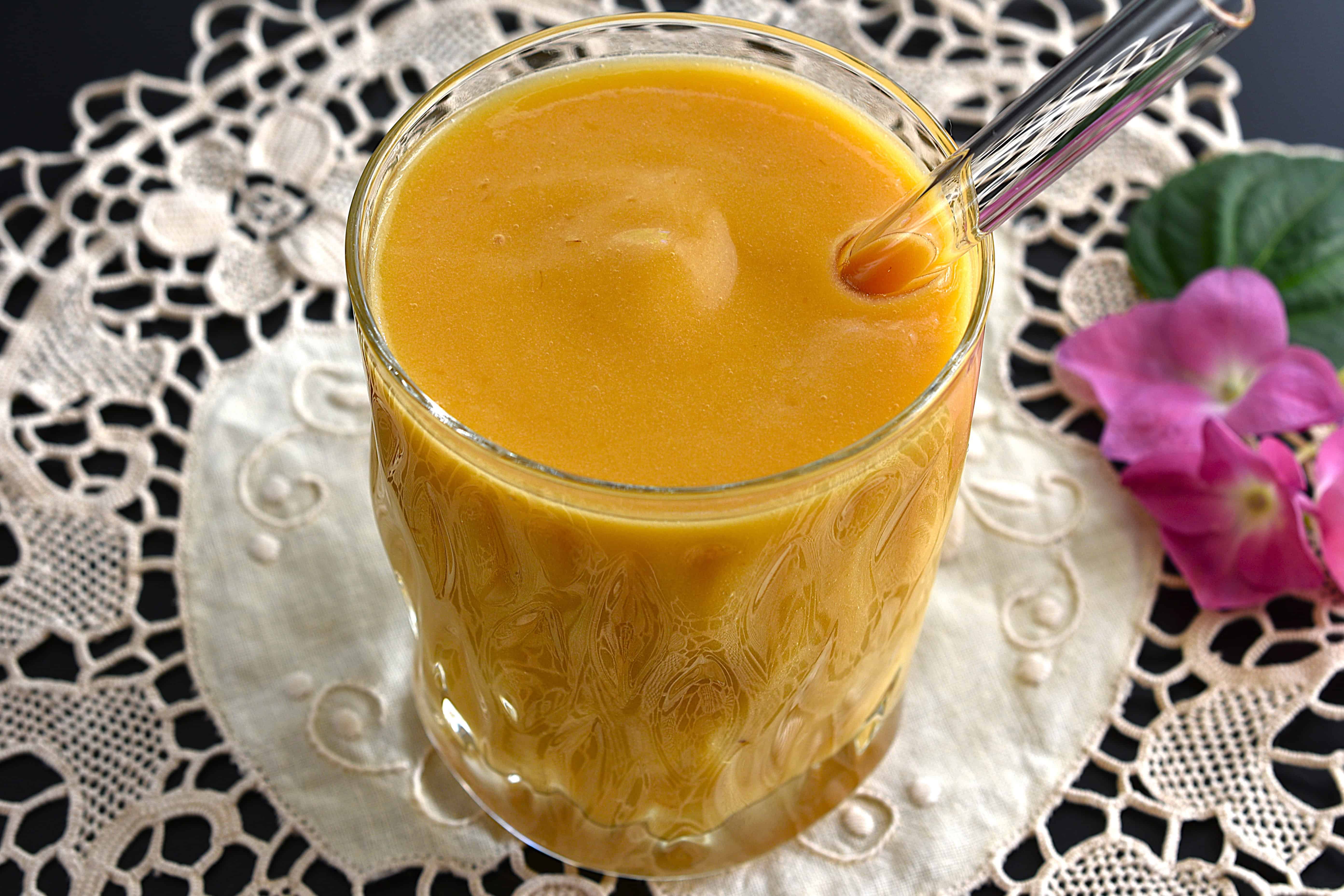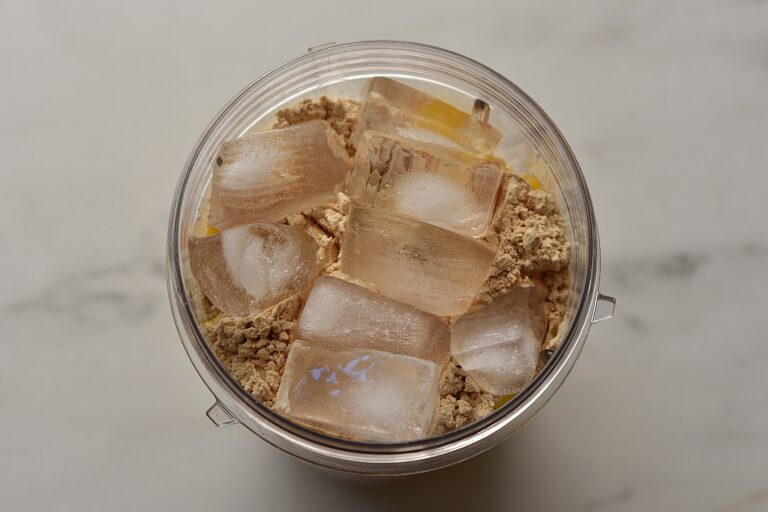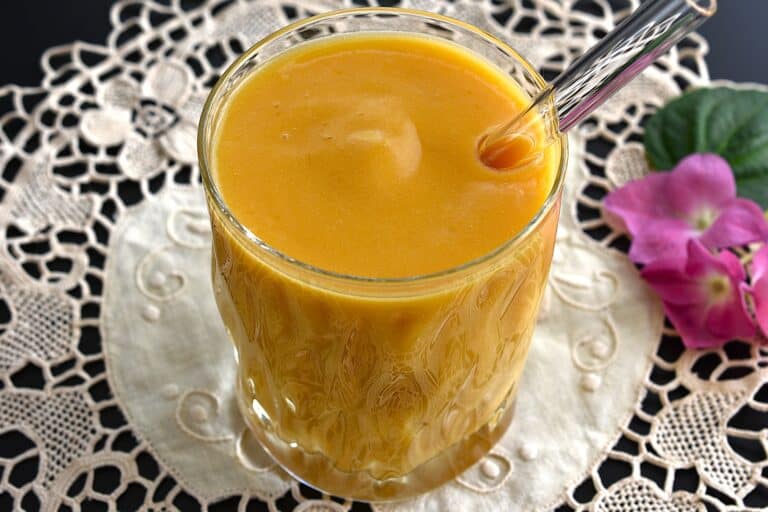This vegan mango pineapple protein smoothie is delicious, fruity, and nutritious! I’m a great smoothie fan, and I love experimenting and making them as tasty and nutrient-dense as possible! This smoothie contains a delicious cocktail of tropical yellow fruits: pineapple, mango, papaya, and banana. I also added some vegan protein powder, which helps keep me active and alert until lunchtime and improves my recovery time after a workout.
This mango and pineapple protein smoothie is naturally vegan, and super quick and easy to make. I added some banana for creaminess and fresh lime juice for a dash of acidity, as I don’t like my smoothies overly sweet. You can omit these if you want. To make this mango pineapple protein smoothie, just roughly chop all the fruit and put it in a blender, along with the fruit juice and some ice cubes, and blend until smooth. That’s it – ready in a flash!
Smoothies are a great way of incorporating a load of vitamins, minerals, fibre, protein, phytonutrients and antioxidants into your breakfast, the first and arguably the most important meal of the day. I love a yellow fruit smoothie and this is one of my favourites – it’s smooth, fruity, and always reminds me of summer. The combination of tropical fruits like mango, papaya and pineapple is irresistible, and the addition of lime juice creates the perfect balance between sweet and sour. Protein powder adds to the nutrient profile, making it a perfect breakfast food for people who care about their health. I hope you enjoy it!
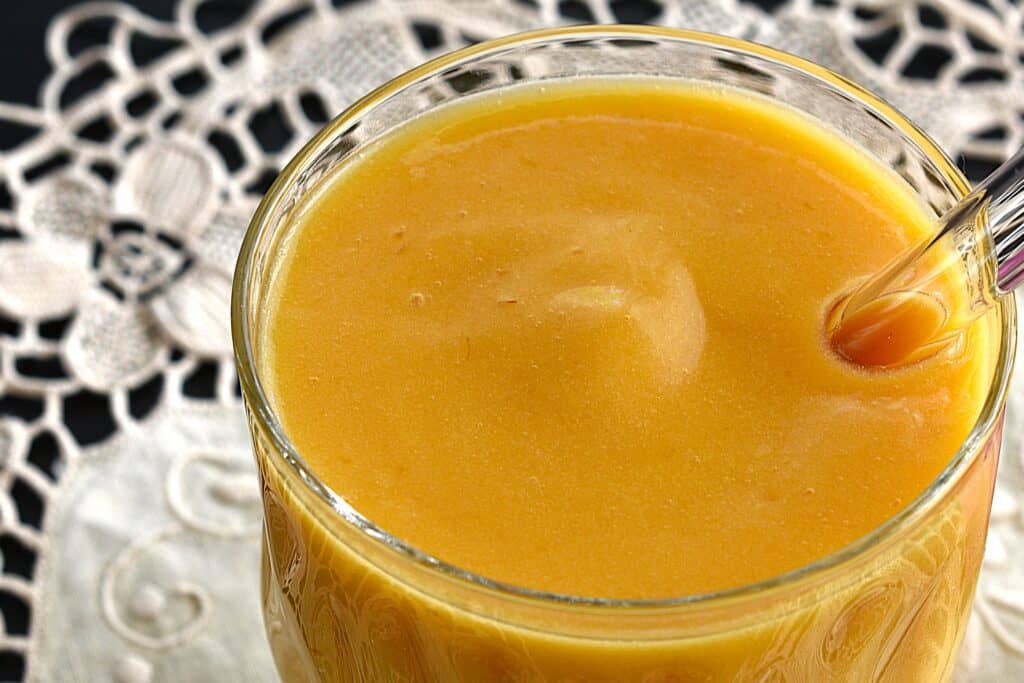
How to make a mango pineapple protein smoothie
Ingredients
You’ll find the exact quantities of each ingredient in the recipe card at the bottom of the page.
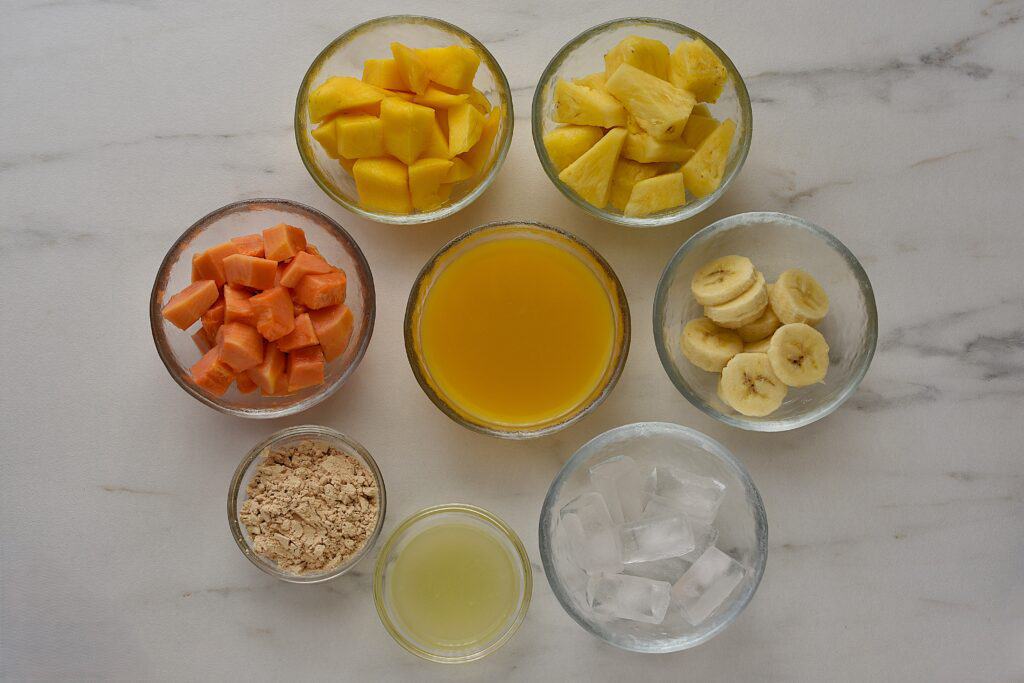
Mango
I used fresh, ripe mango for this smoothie and I recommend you do too. Frozen mango is also a valid alternative. Even dried mango will work but of course you’ll need much less because it’s dehydrated. Two or three strips of dried mango is sufficient. Don’t worry, once blended, even dried ingredients become super smooth.
Mangoes are a good source of antioxidants such as beta-carotene and polyphenols, vitamins C, A, E, K, B6, and folate, as well as potassium, copper and magnesium.
Pineapple
If possible, use ripe, fresh pineapple for this recipe. You could use tinned pineapple instead, but it won’t have the same nutritional value. Some supermarkets sell frozen pineapple, which is great for making smoothies. If you use frozen fruit, you can omit the ice. Pineapples are especially rich in vitamin C, manganese, and numerous other vitamins and minerals. Read more about the nutrients in fresh pineapple here.
Papaya
Papaya is another great tropical fruit and a nutritional powerhouse. Once again, use fresh, ripe papaya if you can. Otherwise, frozen or dried will do.
Papaya provides vitamins C, A, E, K, B6, and folate, as well as the minerals potassium, calcium, copper, and magnesium.
You can even add some of the seeds – they have a piquant flavour and their own set of nutritional benefits and properties. Papaya seeds contain calcium, phosphorus and magnesium, as well as antioxidants and papain (an enzyme that aids digestion).
Banana
No smoothie worth its salt is complete without banana. It makes the smoothie creamy and smooth. It’s also a natural sweetener and a good source of important vitamins and minerals. I use fresh banana where possible. I also freeze my own when I’ve got a glut so that I can use them for smoothies whenever I run out of fresh bananas. Bananas contain fibre and are a good source of several vitamins and minerals, especially potassium, vitamin B6, and vitamin C. Read more about the nutrients in bananas here.
The nutritional information above was taken from Healthline and Medical News Today.
Protein powder
Although it’s a myth that vegans don’t get enough protein, it can be a good thing to add to your breakfast if you’re going to be working out. I use Ringana sport protein powder. It’s 100% vegan, and the ingredients are sustainably sourced.
Ringana sport protein powder contains no chemical ingredients, preservatives, or synthetic fragrances. I love it because it’s absolutely natural and has a neutral taste that I can flavour with whatever I fancy. It’s also low in calories – only 175 cal per 44 g sachet – and contains a whopping 60 g of protein per 100 g of product. It contains all essential amino acids, which makes it a complete protein. The main ingredients are fermented pea and rice protein. Read the full list of ingredients and nutritional information.
For this mango pineapple protein smoothie, I used half a sachet to make two 350 ml glasses. I found that was enough for me, but feel free to increase that amount to your own personal taste if you want. The box in the photo below contains 14 sachets, so it lasts me a month if I have it every day.
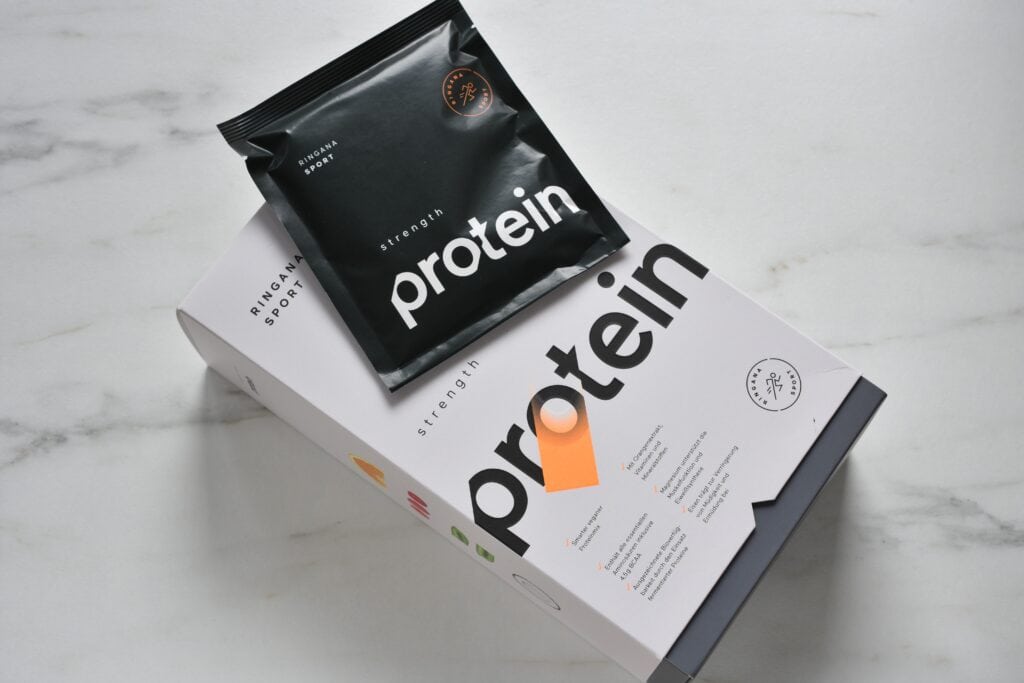
Tropical fruit juice
All smoothies need some kind of liquid to achieve the right consistency, and tropical fruit juice is the most obvious choice for this one. It acts as a sweetener and enhances the colour and flavour profile. You can substitute tropical fruit juice with pineapple or orange juice. I avoid fruit juices made from concentrate wherever possible. I get my juices in the fridge aisle, where the other fresh produce is.
Don’t use any kind of milk in this recipe – it’s a smoothie, not a milkshake.
Lime juice
I like to add a bit of freshly squeezed lime juice to this mango and pineapple smoothie recipe. It balances out the sweetness. Lemon juice does the job just as well if you don’t have any lime juice.
Ice cubes
You’ll need ice cubes if none of the ingredients above are frozen. Warm smoothies aren’t appetising at all, and I always add a bit of ice, even in winter.
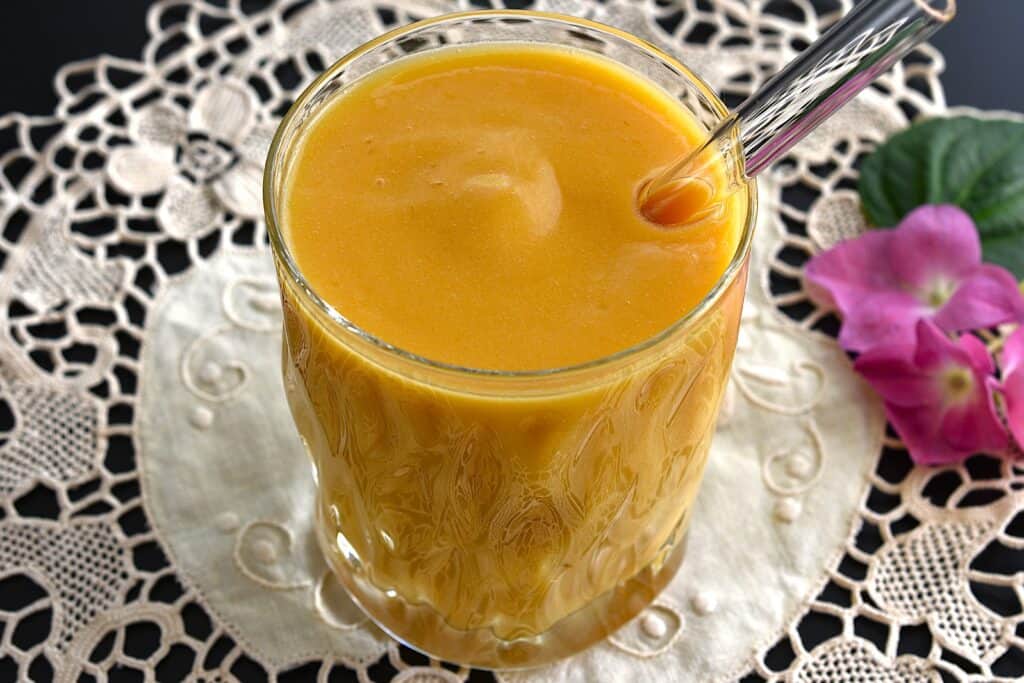
How to make a mango pineapple protein smoothie
Instructions
- Put all the ingredients in a blender beaker – fruit and liquid first, followed by the protein powder, and last of all, the ice.
- Blend until smooth.
How to garnish and serve your mango pineapple protein smoothie
Try serving it in a cocktail glass with a garnish of fresh fruit (optional). It’s best to serve it immediately while it’s still cool, with an environment-friendly straw and a long spoon.
How long can you keep this mango pineapple protein smoothie?
Not long. A few hours, maybe. I made two glasses for the photos on this page, and I kept one for the following day to see how well it kept. It oxidised a bit and turned brownish on top after a few hours (I did leave the glass uncovered in the fridge, though). I drank it 24 hours later, and it still tasted good. Remember, though, that a lot of the nutrients would have been lost by that time. This mango and pineapple protein smoothie is so quick and easy to make that it kind of defeats the purpose of keeping it for that long or freezing it. That said, making it in the morning and drinking it at noon while on the go might be feasible.
If you try this recipe and like it, I’d love to hear about it! Let me know in the comments below, or take a quick pic and share it on social media. Don’t forget to tag me on Instagram or Facebook @vegan_hot_stuff – I love seeing your re-creations!
Frequently asked questions
Can you make smoothies ahead of time?
It’s best to drink smoothies immediately. Once the fruit has been blended, it starts to oxidise and lose its nutrients. If you want to make a smoothie to take on a hike or to work, store it in a cooler bottle and consume it preferably within a few hours.
How long do you need to blend a smoothie?
If you’re using fresh fruit, it only takes a few seconds in a high-speed blender. When using frozen fruit, it will take a bit longer. Larger pieces of frozen fruit will take longer than small pieces. Seeds, dried fruit, and nuts will also require longer blending. In cases like these, blend the ingredients together for up to two minutes to really make sure everything is broken down and smooth. If you have a less powerful blender, it might need more time.
Is mango and pineapple a good combination?
Mango and pineapple are a great combination in a smoothie. They are often found together in fruit juices, too. Both are tropical fruits, and their flavours complement each other perfectly. This mango and pineapple smoothie not only tastes amazing but also looks stunning with its vibrant orange/yellow hue. Mango, pineapple and papaya give this smoothie a sunny, tropical look that immediately evokes thoughts of warm, exotic destinations.
Can I use frozen mango and pineapple for my smoothie?
Yes, using frozen mango and pineapple is a good option because it gives the smoothie a thick, frosty texture without needing additional ice.
What are good additions to a mango pineapple smoothie?
I added papaya and banana to my mango pineapple smoothie because they are also tropical fruits and enhance the overall flavour. You could add ingredients like spinach or kale for extra nutrients, chia seeds or flaxseeds for omega-3s, protein powder for a post-workout boost, or coconut milk for a tropical twist. Think about colour when choosing your ingredients. Mixing orange and green typically results in a brownish colour, for example.
What liquid should I use in a mango pineapple smoothie?
I recommend using a fruit juice like pineapple, orange, or a tropical mix. Coconut water is also an option. You can’t go wrong with plain water in a smoothie, especially if you don’t have the right juice to go with the fruit you are using. Avoid using milk – it’s a smoothie, not a milkshake!
I hope you liked this recipe for homemade vegan basil pesto! If you did, it would be great if you could give it 5 stars and leave a comment below! It helps other readers to find my content and posts and ultimately makes my blog more successful! Thank you so much for your support! Deborah xx
Before you go, maybe you’d like to have a look at some other delicious vegan recipes…
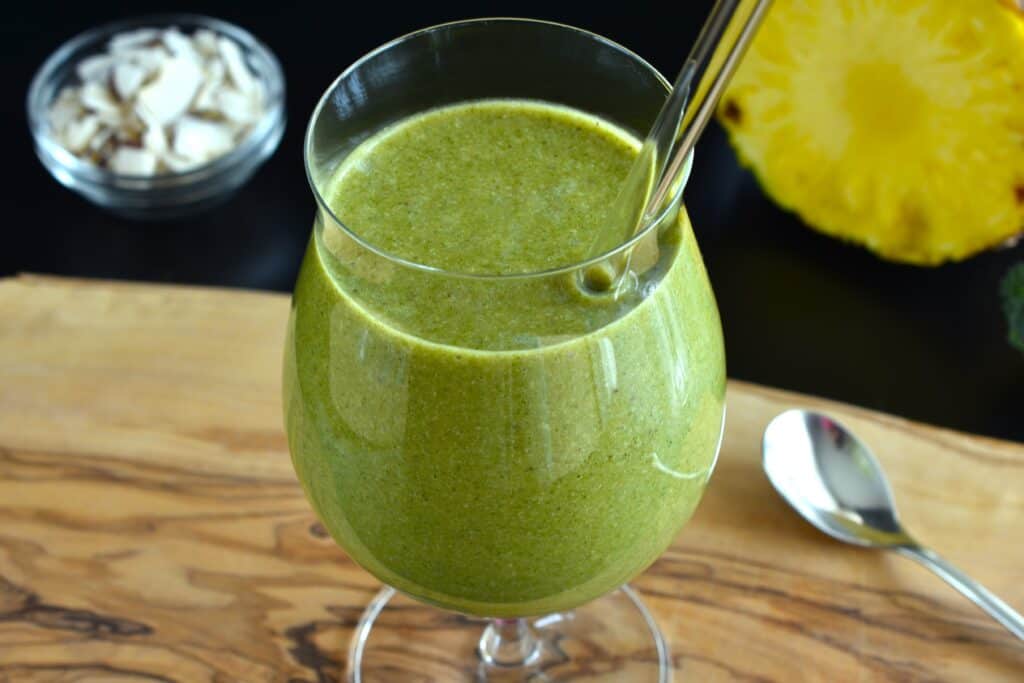
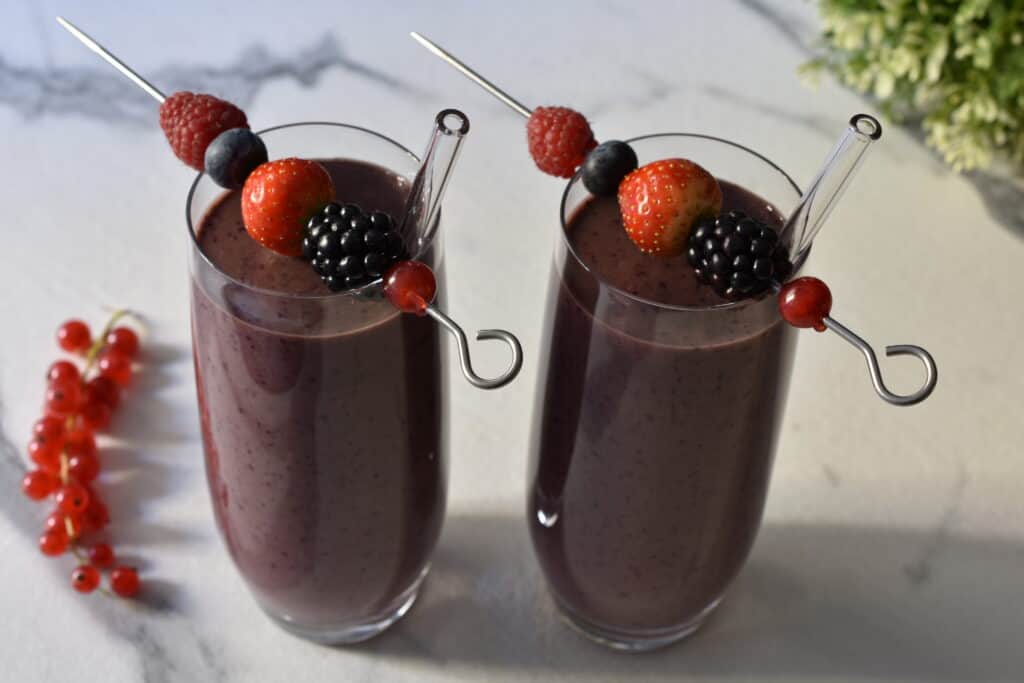
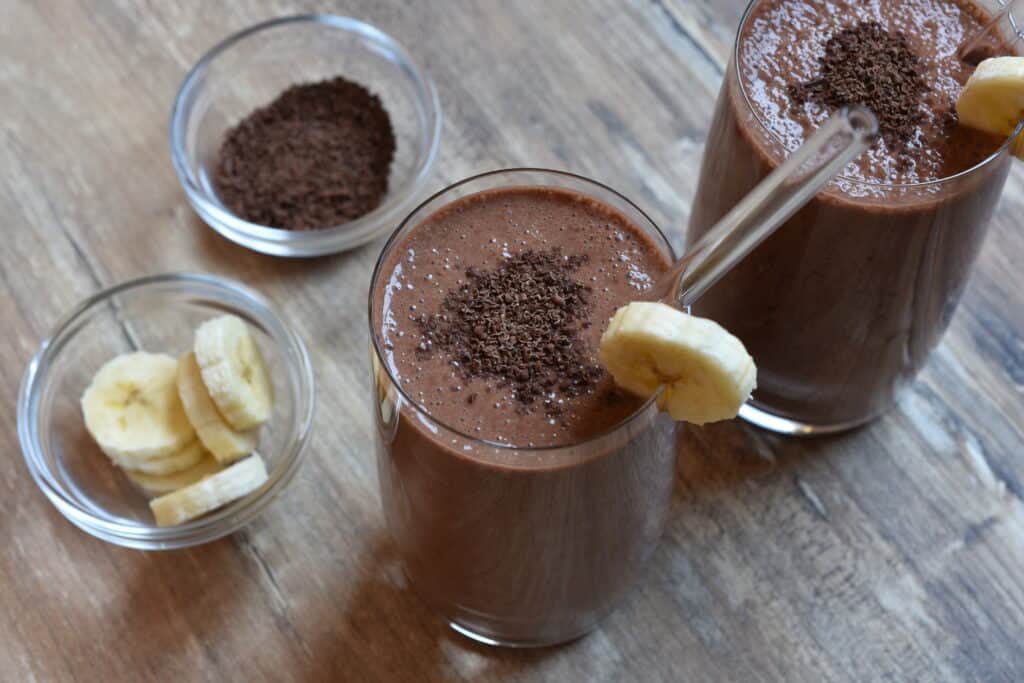
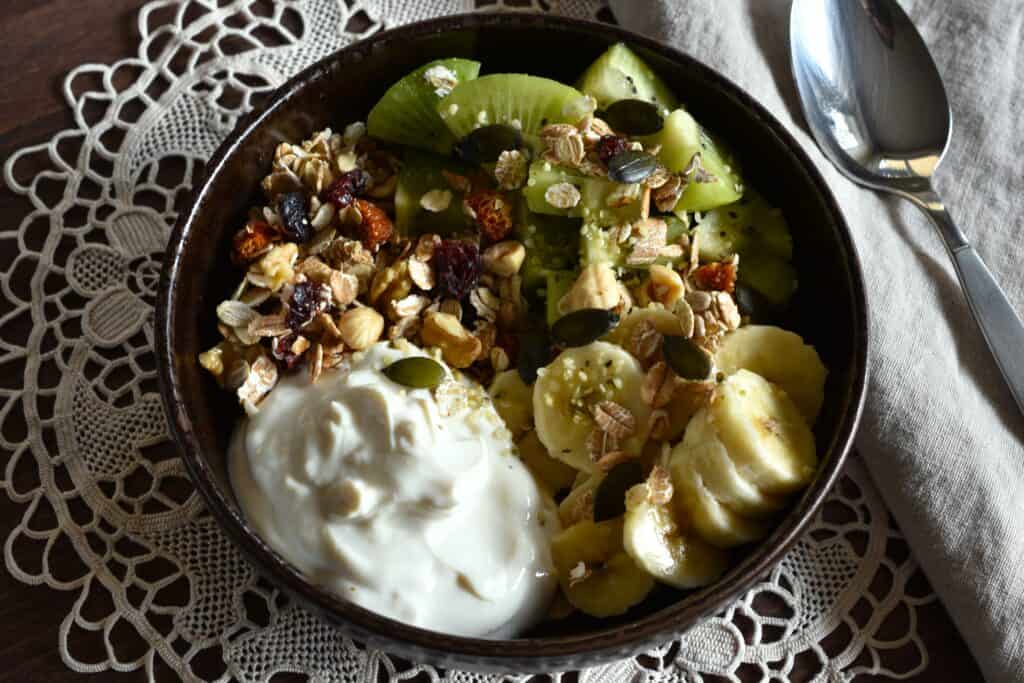
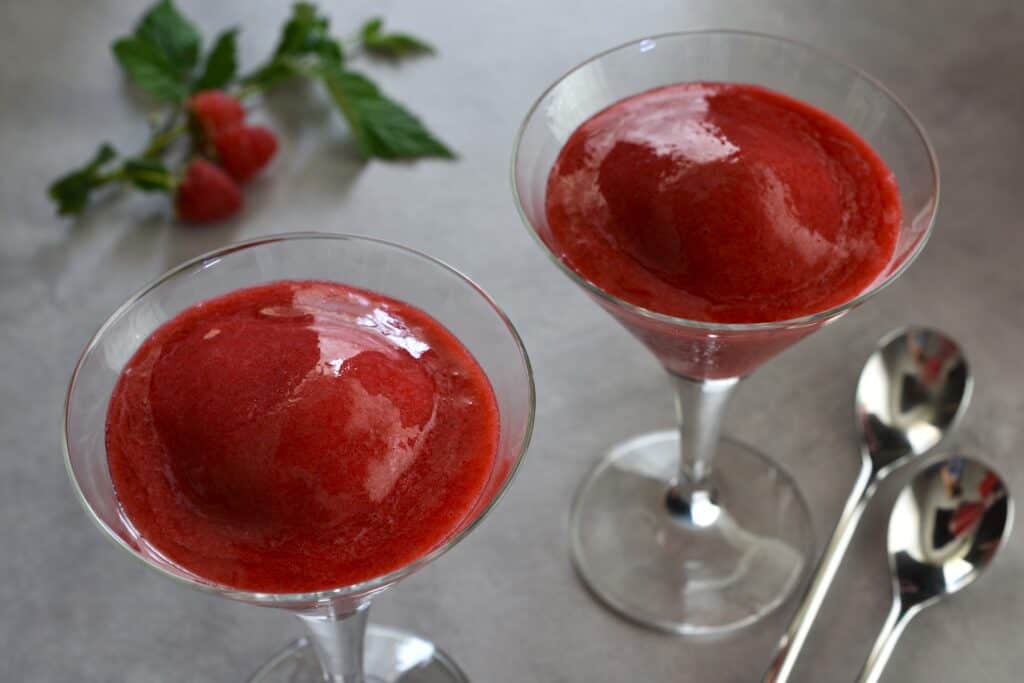
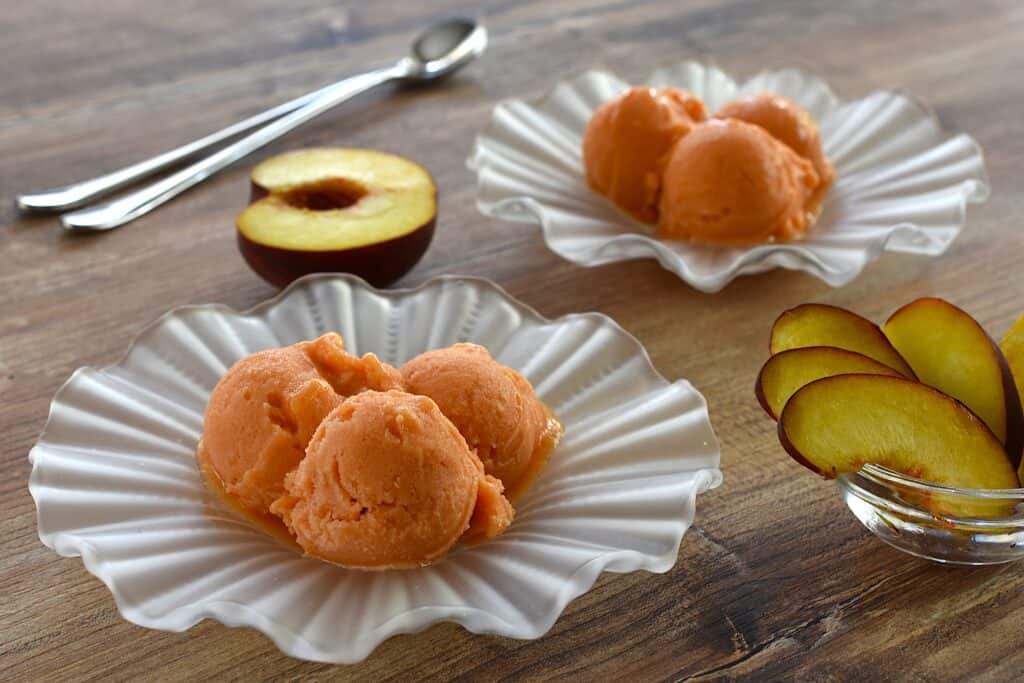
Would you like to receive my recipes as soon as I publish them? Subscribe below!


